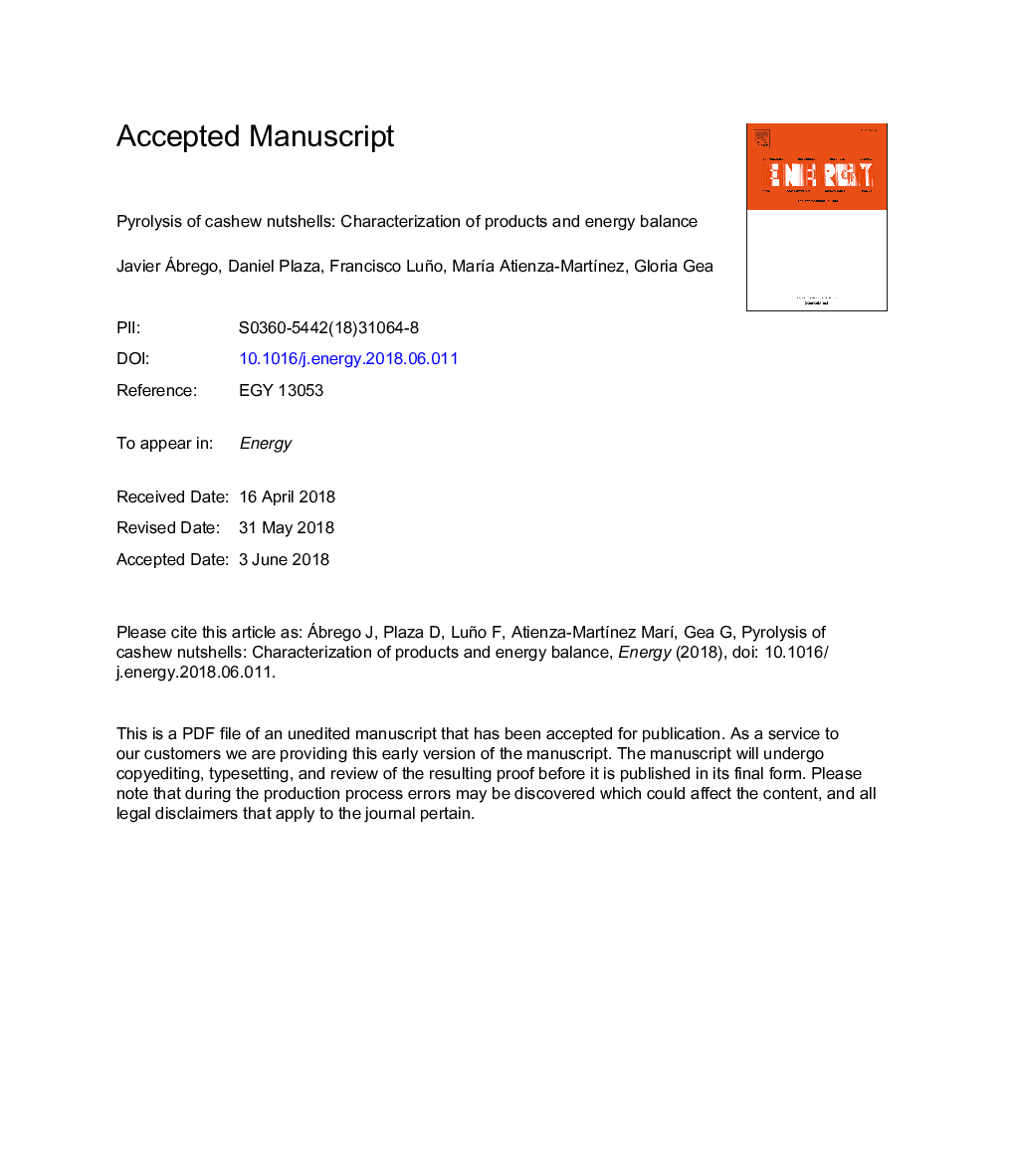| Article ID | Journal | Published Year | Pages | File Type |
|---|---|---|---|---|
| 8071141 | Energy | 2018 | 28 Pages |
Abstract
Cashew cultivation leads to the generation of large amounts of nutshells. In order to determine whether pyrolysis could be a suitable method for the valorization of this agricultural residue, cashew nutshells (CNS) from Burkina Faso were pyrolyzed in the temperature range between 400 and 600â¯Â°C in a laboratory-scale fixed bed reactor. The solid, liquid and gaseous fractions were quantified and characterized, with special focus on the solid product. Recovery of the cashew nutshell liquid (CNSL) was accomplished during pyrolysis separately from the pyrolysis liquid. Results suggest that, except for the aqueous fraction, all the products obtained from pyrolysis are suitable for fuel purposes, and that part of the CNSL can be recovered below 200â¯Â°C during the heating process. A preliminary energy balance of the process shows that burning the gases can provide the energy necessary for the process at a pyrolysis temperature of 500â¯Â°C.
Keywords
Related Topics
Physical Sciences and Engineering
Energy
Energy (General)
Authors
Javier Ábrego, Daniel Plaza, Francisco Luño, MarÃa Atienza-MartÃnez, Gloria Gea,
